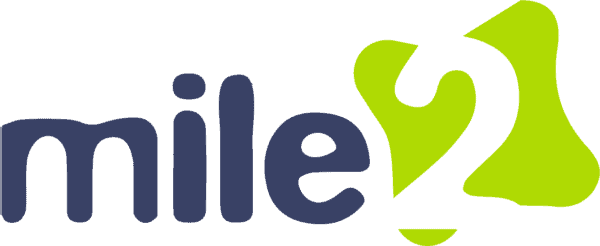OCU C)ISSO D Discussion Lesson 03
- This topic has 5 replies, 3 voices, and was last updated 11 months, 2 weeks ago by
Kevin Mehok.
-
AuthorPosts
-
-
March 24, 2022 at 3:16 pm #65770
Jessica Jagerson
KeymasterExplain what these have in common: identity management, authentication techniques, single sign-on, and access control monitoring. Use at least 2 terms with each when discussing the commonalities. Present examples from both the text and the video.
-
April 14, 2023 at 12:23 pm #85026
Kelly Crooks
ParticipantIdentity management, authentication techniques, single sign-on, and access control monitoring are all ways to make sure the user is identified correctly to gain access to data. Identification is the act of stating or otherwise indicating a claim of purportedly attesting to a person or thing’s identity. Each person or process must have a unique identity when accessing data. The identification process must drive access control.
Authentication techniques include things such as pin numbers, biometric markers, passwords, passphrase RFID or some other form of authenticating the identity of the user or owner of the data.
Single-sigh-on is just that, the user only needs to authenticate their identity one time to have access to applications and tasks. This makes it easier to move between tasks and makes it easier to get your work done. The drawback is that you only need to sign in one time and others can have access to your work if you leave the computer or don’t sign out.
Access control monitoring helps to make sure that services and access are controlled and secure. It is an investment in time, talent, and resources but without constant and diligent monitoring, the risk of unsatisfactory business outcomes is higher. Making sure that a business’s data is secure and safe is a key part of what a security manager does. It is our job as security information officers to make sure the data is safe but also that only those people with the correct authorization have access to that data.
-
April 14, 2023 at 4:23 pm #85047
Marcena Davis
ParticipantI agree. Identity management, authentication techniques, single sign-on, and access control monitoring are crucial components of ensuring data security. It’s amazing how much technology has advanced to enable these processes, from biometric markers to RFID.
In my own experience, I’ve seen the benefits of single sign-on firsthand. It’s so convenient to be able to move between tasks without having to continually enter your credentials. However, I can definitely understand the potential security risks involved. It’s essential to be diligent about logging out and taking precautions to protect your data.
I think the points you’ve made about the importance of identification, authentication, and access control are spot on. It’s essential for security information officers to stay up-to-date on the latest technologies and best practices to ensure that their organization’s data is safe and secure.
-
-
April 14, 2023 at 2:44 pm #85040
Marcena Davis
ParticipantThe objective of identity management, authentication techniques, single sign-on, and access control monitoring is to control who has access to information systems and networks in order to ensure their security and integrity.
Authentication, which involves verifying the identity of users or devices before granting access to sensitive resources, is a term that applies to all of these concepts. Biometric authentication methods such as fingerprint scanning and facial recognition can be used to verify the identity of users, while digital certificates and smart cards can be used to authenticate devices.
Access control is another term that applies to these ideas; it refers to the process of controlling who has access to particular resources based on their identity and level of authorization. Role-based access control (RBAC), which assigns specific permissions to users based on their role or job function, and attribute-based access control (ABAC), which uses a set of attributes or characteristics to determine whether a user should be granted access to a resource, are examples of access control mechanisms.
Single sign-on (SSO) is another concept closely related to identity management and authentication techniques, as it enables users to authenticate once and access multiple resources without re-entering their credentials. This can improve security by reducing the need for users to remember multiple passwords or access credentials, and by making it easier for IT departments to manage user access and permissions.
Access control monitoring entails continuous monitoring of user access and activity in order to detect and prevent unauthorized access and other security incidents. This may involve monitoring access logs, network traffic, and other indicators in order to identify potential threats and respond promptly to security incidents.
Collectively, these concepts play an essential role in ensuring the security and integrity of information systems and networks, and they provide multiple layers of protection against potential threats and attacks.
-
April 16, 2023 at 8:12 pm #85064
Kelly Crooks
ParticipantI agree with what you responded to my post as well as what you posted in your own discussion of SSO. In my own business, I have several hundred sites I access using a front computer, office computer, iPad as well as my phone. Having a single sign-on not only saves me time from having to sign in each and every time but also saves me from having to remember all the passwords and usernames associated with each site. I do have to remember to sign out every night and I have also implemented screen passwords on both computers, just as an added step of security.
-
-
May 5, 2023 at 4:11 pm #85709
Kevin Mehok
ParticipantIST3100 Information Systems Security Officer
Authentication Discussion
Kevin MehokAuthentication is the process of determining whether someone or something is, in fact, who or what it says it is (Shacklett, 2023). What I have learned this week is that authentication technology provides access control for systems by checking to see if a user’s credentials match the credentials in a database of authorized users or in a data authentication server (Shacklett, 2023). The importance in doing this is that authentication assures secure systems, secure processes and enterprise information security (Shacklett, 2023).
There are several authentication types. For purposes of user identity, users are typically identified with a user ID, and authentication occurs when the user provides credentials such as a password that matches their user ID (Shacklett, 2023). In the practice of requiring a user ID and password is known as single-factor authentication (SFA) (Shacklett, 2023). In recent years, companies have strengthened authentication by asking for additional authentication factors, such as a unique code that is provided to a user over a mobile device when a sign-on is attempted or a biometric signature, like a facial scan or thumbprint (Shacklett, 2023). Many of us are similar with this process just by being a smartphone user. This is known as two-factor authentication (2FA) (Shacklett, 2023).
Authentication factors can even go further than SFA, which requires a user ID and password, or 2FA, which requires a user ID, password and biometric signature (Schacklett, 2023). When three or more identity verification factors are used for authentication; for example, a user ID and password, biometric signature and perhaps a personal question the user must answer; it is called multifactor authentication (MFA) (Shacklett, 2023).
God Bless,
Kevin
References:
Shacklett, M. (2023) https://www.techtarget.com/searchsecurity/definition/authentication
-
-
AuthorPosts
- You must be logged in to reply to this topic.


